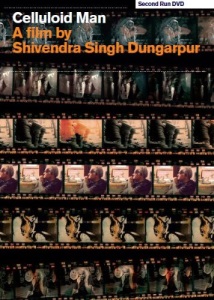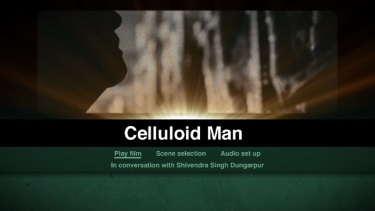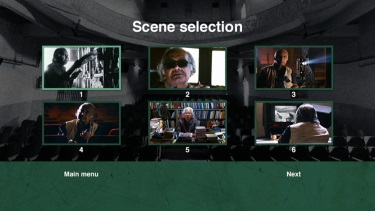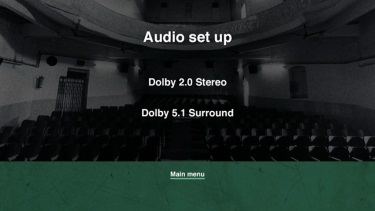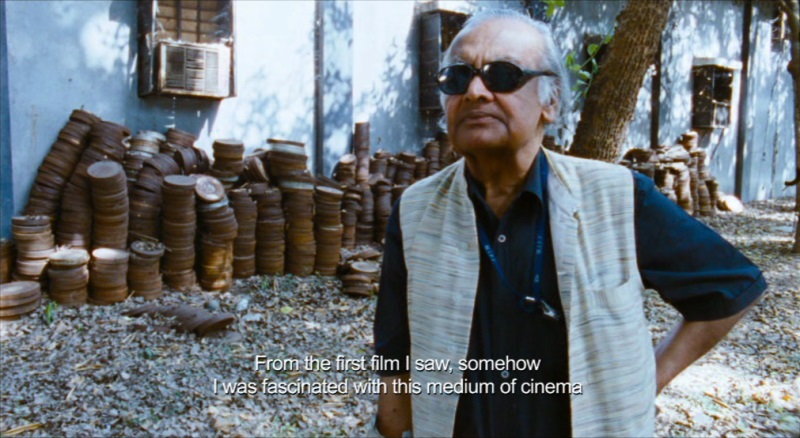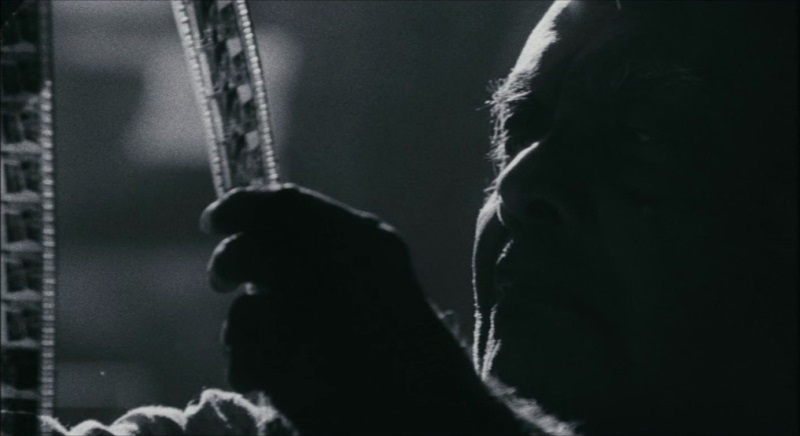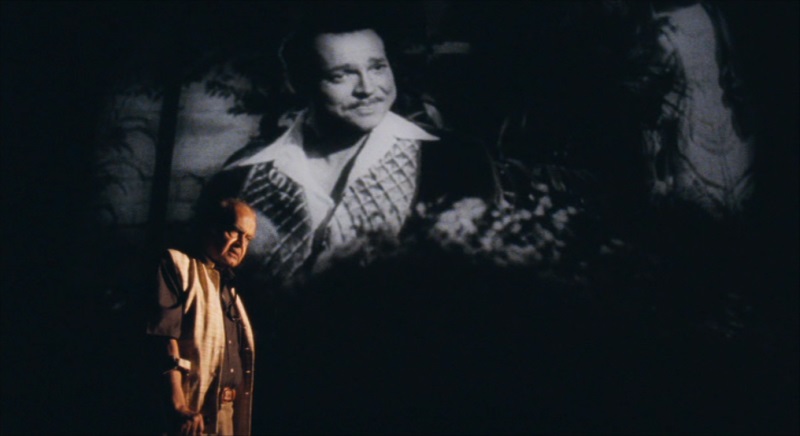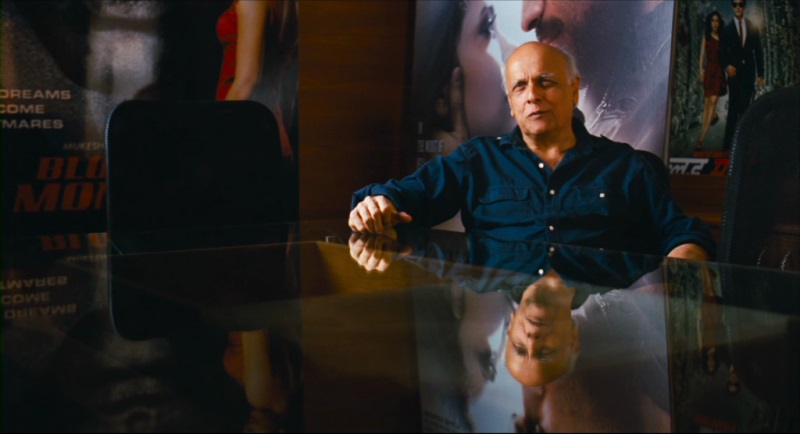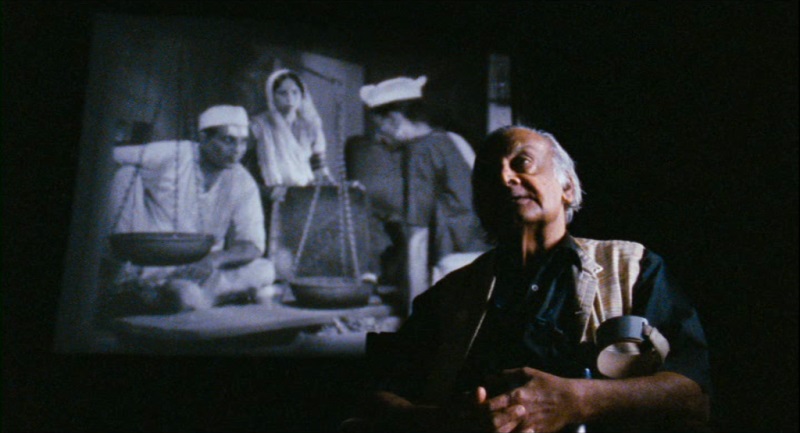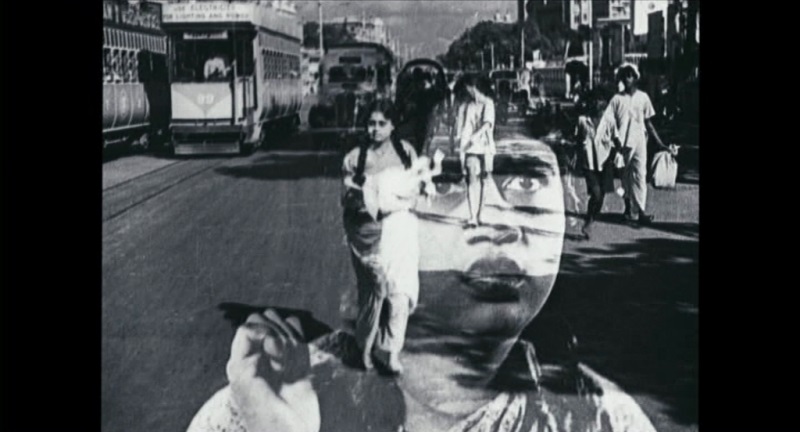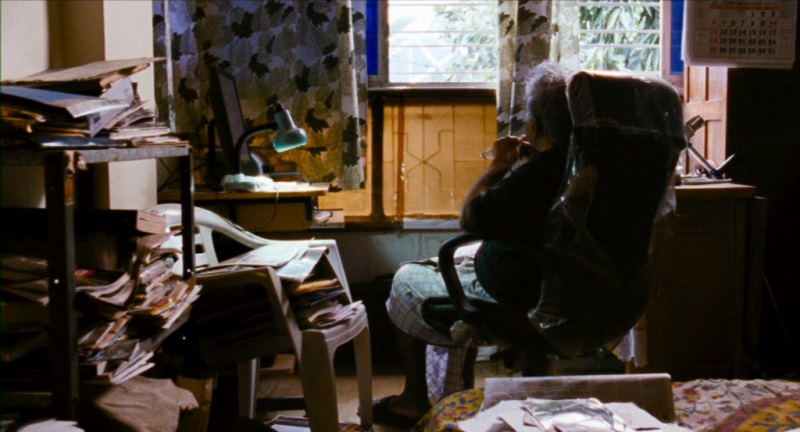![]()
![]()

![]()
![]()
|
Search DVDBeaver |
S E A R C H D V D B e a v e r |
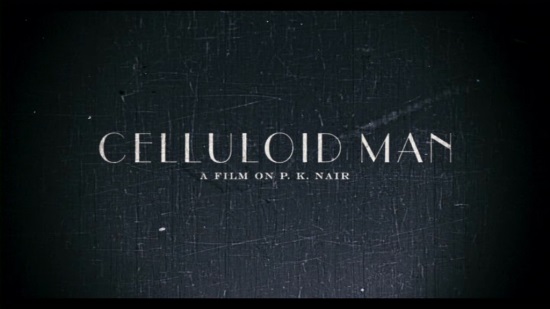
directed by Shivendra Singh Dungarpur
India 2012
|
Shivendra Singh Dungarpur's CELLULOID MAN is the all-encompassing story of P.K. Nair, Indian film preservation's equivalent of Cinémathèque Française's Henri Langlois, who set about recovering what remained of India's rich cinematic past by founding the National Film Archives in 1965 (only managing to salvage twelve of the twelve-hundred films of India's silent period) and also forging relationships with other film archives around the world to enrich the educations of his own country's filmmakers with Nair's own early favorites RASHOMON and BICYCLE THIEVES mentioned a number of times by Nair himself as well as several of the village locals who were exposed to the films when Nair's theater program took films to the road to enrich the cultural lives of the citizens. Nair retired in 1995 when his wife fell ill, and this documentary finds the state of Indian film preservation has seemingly fallen back into a state of neglect (and the current representatives of the institute apparently hostile to Nair's presence). As such, the film is on the surface an affecting portrait of a man's love affair with cinema as well as a reminder that the memories preserved on film can also be lost if the act of archiving is neglected (one of the commentators describes India - in contrast to the West - as a country with a rich past but a poor history). The film offers many tantalizing views of Indian films, some of which were preserved in full and others only surviving in single reels or even less (including the films of India's earliest director Dadasaheb Phalke like KALIYA MARDAN which Nair discovered was given by the director's heirs in pieces which he was able to reassemble in full from the director's notebook). The documentary itself is as much a love letter to celluloid as director Shivendra Singh Dungarpur shot the film in 35mm and 16mm formats on stock purchased by himself as well as reels acquired through his collaborators' network of resources rather than HD video (the extracts from the director's shooting diary even find him shooting stills on a second-hand Hasselblad [medium format camera] and Nikon FM10 [the line's plastic body initially developed for Southeast Asian market] and refusing a partner's offer of a Canon 5D DSLR when they discovered that their Arriflex 435 camera had no blimp). |
Posters
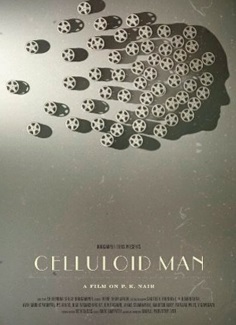 |
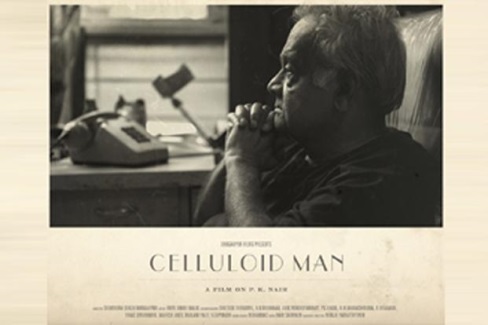 |
Theatrical Release: 2012 (India)
Reviews More Reviews DVD Reviews
DVD Review: Second Run DVD - Region 0 - PAL
Big thanks to Eric Cotenas for the Review!
| DVD Box Cover |
|
CLICK to order from: |
| Distribution |
Second Run DVD Region 0 - PAL |
|
| Runtime | 2:29:50 (4% PAL speedup) | |
| Video |
1.85:1 Original Aspect Ratio
16X9 enhanced |
|
|
NOTE: The Vertical axis represents the bits transferred per second. The Horizontal is the time in minutes. |
||
| Bitrate |
|
|
| Audio | English/Hindi/Bengali/Kannada Dolby Digital 5.1. English/Hindi/Bengali/Kannada Dolby Digital 2.0 stereo | |
| Subtitles | English (burnt-in) | |
| Features |
Release Information: Studio: Second Run DVD Aspect Ratio:
Edition Details: Chapters 12 |
|
| Comments |
Second Run's
dual-layer DVD has a variable look due to the use of different
16mm and 35mm filmstocks (not always intentionally so since the
director had to not only buy stock himself but depend on his
collaborator's network of friends to secure odd rolls here and
there) and the archival footage (excerpts from the films
themselves as well as vintage home movies). There are scratches
on the new footage as well as the occasional hairs in the gate,
but these "faults" seem very appropriate for a documentary that
eschewed HD video in favor of celluloid. Audio is offered up in
Dolby Digital 5.1 and 2.0 stereo, but there is very little
surround activity apart from some musical interjections (the
multi-channel configuration seems more obligatory than
artistic). English subtitles are burnt-in for all of the
dialogue, which may not seem necessary for even the most
thickly-accented English until the participants start rattling
off the names of Indian filmmakers and titles of films (as well
as the occasional unrecognizable pronunciation of titles of
well-known films from other countries). |
DVD Menus
|
|
|
|
|
Screen Captures
Subtitle sample
|
|
|
|
|
|
|
|
|
|
|
|
|
|
| DVD Box Cover |
|
CLICK to order from: |
| Distribution |
Second Run DVD Region 0 - PAL |
|
![]()
![]()

![]()
![]()
 Search DVDBeaver |
S E A R C H D V D B e a v e r |
